Woodworking projects often require numerous holes to be drilled in various sizes and depths, which can be accomplished with different types of wood drill bits. The type of drill bit you choose will largely depend on the intended use and characteristics of the wood you are working with.
There are many different types of wood drill bits available, including forstner drill bits and rasp drill bits, each with their own unique features and advantages. Understanding the various types of wood drill bits and their applications can greatly improve the quality and efficiency of your woodworking projects.
Key Takeaways
- The right wood drill bit can make all the difference in the success of your woodworking project.
- Forstner drill bits are specialized for precision drilling and are compatible with various woodworking machines.
- Rasp drill bits are versatile tools for shaping and smoothing wood surfaces.
- Consider factors like material, size, and desired hole characteristics when selecting a wood drill bit.
- Proper care and maintenance can extend the lifespan and performance of your wood drill bits.
Plug Cutters: Creating Perfect Plugs for Woodworking Projects
When it comes to woodworking, creating a clean and seamless finish is key. One essential tool for achieving this is a plug cutter. Plug cutters are designed to create precise plugs that can be used to hide screws or fill holes in wood, ensuring a polished final product.
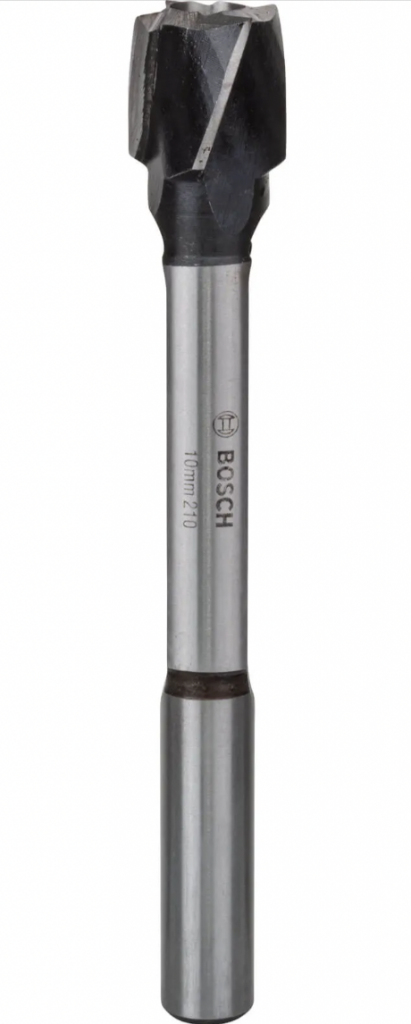
Sizes and Uses of Plug Cutters
Plug cutters come in various sizes, typically ranging from 1/8 to 1 inch in diameter. The size of the plug cutter should correspond to the size of the screw or hole being concealed. Using a plug cutter that is too large or too small can result in an ill-fitting plug that detracts from the overall appearance of the piece.
Plug cutters are commonly used in furniture making, cabinetry, and woodworking projects where a seamless finish is desired. They can also be used for decorative purposes, such as creating wooden dowels or inlays.
Tips for Achieving Clean and Precise Results
When using a plug cutter, it’s important to select a high-quality, sharp bit to ensure precise cutting. Additionally, the wood being used should be free of knots or other imperfections that can affect the fit of the plug.
It’s also crucial to drill a hole that is slightly deeper than the length of the plug. This ensures that the plug sits flush with the surface of the wood. Once the plug is cut, it should be gently tapped into place using a mallet or hammer. Any excess wood can be sanded down for a smooth finish.
Table: Common Plug Cutter Sizes and Uses
| Size (inches) | Common Uses |
|---|---|
| 1/8 | Small decorative plugs, dowels |
| 1/4 | Medium-sized plugs for furniture, cabinetry |
| 1/2 | Large plugs for construction projects |
Overall, using a plug cutter is a simple way to elevate the look and quality of your woodworking projects. By selecting the appropriate size and following proper techniques, you can achieve clean and precise results that enhance the overall appearance of your work.
Hinge Drill Bits: Choosing the Right Size and Type for Your Project
If you’re looking to install hinges in your woodworking project, a hinge drill bit is an essential tool to have. With the right hinge drill bit, you can ensure precise and accurate drilling, making it easier to install hinges that function smoothly and securely. In this section, we’ll explore the different types and sizes of hinge drill bits, along with tips for proper usage and installation of hinges.
Types of Hinge Drill Bits
There are two main types of hinge drill bits: standard and self-centering.
| Standard Hinge Drill Bits | Self-Centering Hinge Drill Bits |
|---|---|
| Require more accuracy and skill to use | Are simpler to use and more forgiving of mistakes |
| Available in different sizes to accommodate various hinge types | Usually come in a single size that fits most hinges |
Standard hinge drill bits require more precision and skill to use, but they offer greater versatility in terms of the hinge types they can accommodate. They come in different sizes to match the size and style of the hinges you’re using. Self-centering hinge drill bits, on the other hand, are simpler to use and are more forgiving of mistakes. They automatically self-center when you start drilling, ensuring that your holes are perfectly aligned.
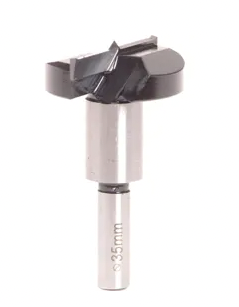
Choosing the Right Size
The size of your hinge drill bit will depend on the size of the hinges you’re using. Measure the diameter of the hinge screws and choose a drill bit that is slightly smaller in diameter. This will allow for a tight fit and prevent the screws from slipping or wobbling.
It’s also important to consider the depth of the holes you need to drill. Make sure your drill bit is long enough to reach the required depth without drilling through the other side of the wood. If you’re unsure about the size of drill bit you need, it’s always better to err on the side of caution and choose a slightly smaller size.
Proper Usage of Hinge Drill Bits
When using a hinge drill bit, it’s important to keep the following tips in mind:
- Use a clamp or vise to secure your workpiece, ensuring that it doesn’t move while you’re drilling.
- Mark the location of the hinge on your workpiece with a pencil or marking tool, ensuring that it’s level and centered.
- Use a center punch or awl to create a small indentation where you’ll be drilling. This will help prevent your drill bit from slipping and ensure accurate drilling.
- Use a slow and steady speed when drilling, and avoid applying too much pressure. Let the drill bit do the work, and allow it to cool down periodically to prevent overheating.
- Once you’ve drilled your holes, use a chisel or hand file to clean up any rough edges or excess wood around the holes.
By following these tips and choosing the right size and type of hinge drill bit for your project, you’ll be able to achieve precise and accurate results that will ensure your hinges function smoothly and securely.
Brad Point Drill Bits: A Guide to Choosing and Using
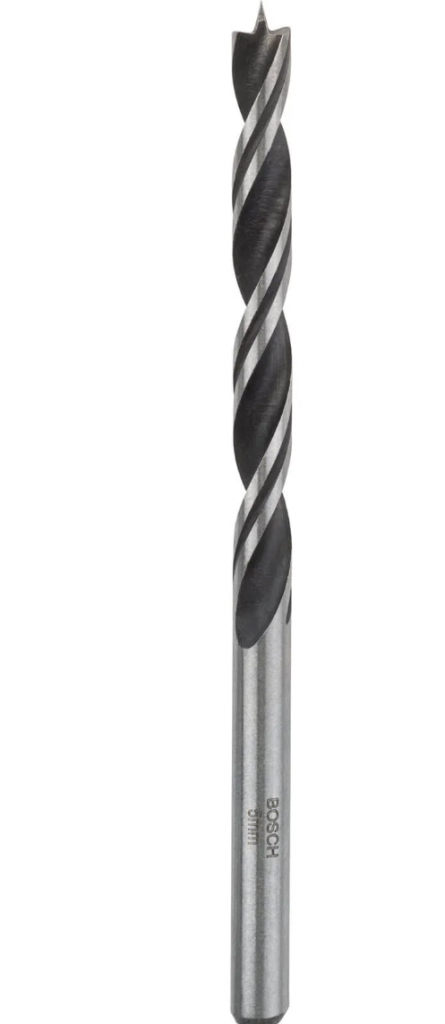
Brad point drill bits are a popular choice for woodworking projects, thanks to their unique design that prevents wood from splintering. If you’re considering using brad point drill bits, it’s essential to understand their features and advantages.
Features of Brad Point Drill Bits
Unlike regular twist drill bits, brad point drill bits have a sharp, centered tip that creates a clean entry point without wandering. This design makes them ideal for drilling holes in wood without causing splintering or tear-out. Brad point drill bits are also available in a range of sizes, from 1mm to 30mm, making them a versatile choice for various woodworking tasks.
Advantages of Brad Point Drill Bits
The main advantage of brad point drill bits is their accuracy. They create clean, precise holes without damaging the surrounding wood. This makes them an especially useful choice for drilling holes for dowels, as the absence of splintering helps ensure a secure and accurate fit. Brad point drill bits are also less likely to wander or slip during use, as their center point provides a clear reference point for drilling.
Using Brad Point Drill Bits
While brad point drill bits are straightforward to use, there are a few tips to keep in mind. First, it’s essential to ensure that the drill bit is sharp, as a dull bit can cause splintering or wandering. You should also use a drill with adjustable speed, as high speeds can cause overheating and damage the bit. Additionally, it’s important to clamp the wood securely in place to prevent movement during drilling.
Choosing the Right Brad Point Drill Bit
When selecting a brad point drill bit, consider the size and material of the hole you need to drill, as well as the type of wood you’ll be working with. Choose a bit that is slightly larger than the diameter of the hole, as this will help ensure a clean and accurate result. It’s also a good idea to invest in high-quality brad point drill bits, as these will be more durable and provide better results over time.
Auger Drill Bits: Clean and Effective Woodworking Drilling
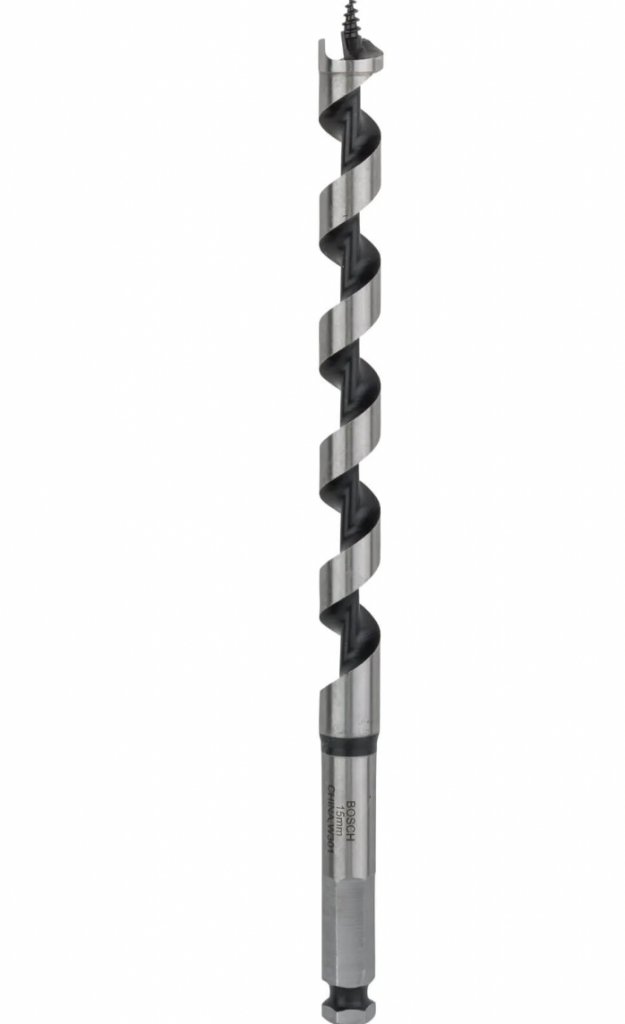
Auger drill bits are a popular choice for drilling precise and clean holes in wood. These drill bits feature a long, spiral design that allows for efficient chip removal and reduces clogging, making them ideal for deep drilling applications.
Sizes and Types of Auger Drill Bits
Auger drill bits are available in a wide range of sizes and types, each designed for specific woodworking tasks. Standard auger drill bits are suitable for drilling deep holes in soft or hardwood, while ship auger bits are ideal for rough drilling in softwood or construction lumber. For precision drilling, spoon bits are a popular choice, featuring a concave shape that allows for a clean and accurate cut.
Other types of auger drill bits include:
- Boring bits
- Extension bits
- Auger bits with screw points
Using Auger Drill Bits
When using auger drill bits, it is important to ensure that the bit is sharp and the cutting edges are clean to achieve a clean and accurate cut. To avoid splintering when drilling through a piece of wood, it is recommended to place a backer board behind the workpiece.
When drilling with an auger bit, it is important to allow the bit to take its time and not force it through the wood. This will help prevent overheating and prolong the lifespan of the bit. It is also important to keep the bit clean and free from debris to ensure optimal performance.
Comparing Auger Drill Bits
In the table below, we compare the sizes, types, and features of different auger drill bits to help you choose the best option for your woodworking needs.
| Auger Drill Bit Type | Diameter Range | Material Compatibility | Chip Removal |
|---|---|---|---|
| Standard Auger Bits | 1/4″ to 1-1/2″ | Softwood, Hardwood | Efficient |
| Ship Auger Bits | 1/4″ to 1-1/2″ | Softwood, Construction Lumber | Efficient |
| Spoon Bits | 1/8″ to 1″ | Softwood, Hardwood | Clean |
| Boring Bits | 3/8″ to 1-1/2″ | Softwood, Hardwood, Plywood, MDF | Efficient |
“Auger drill bits are versatile tools that offer clean and precise drilling for a variety of woodworking projects.” – Woodworking Magazine
With their efficient chip removal and clean drilling capabilities, auger drill bits are an excellent choice for woodworking projects that require precision and accuracy. By selecting the right type and size of auger drill bit for your specific task, you can ensure optimal results and a professional-quality finish.
Flat Drill Bits: Ideal for Large, Flat-Bottomed Holes
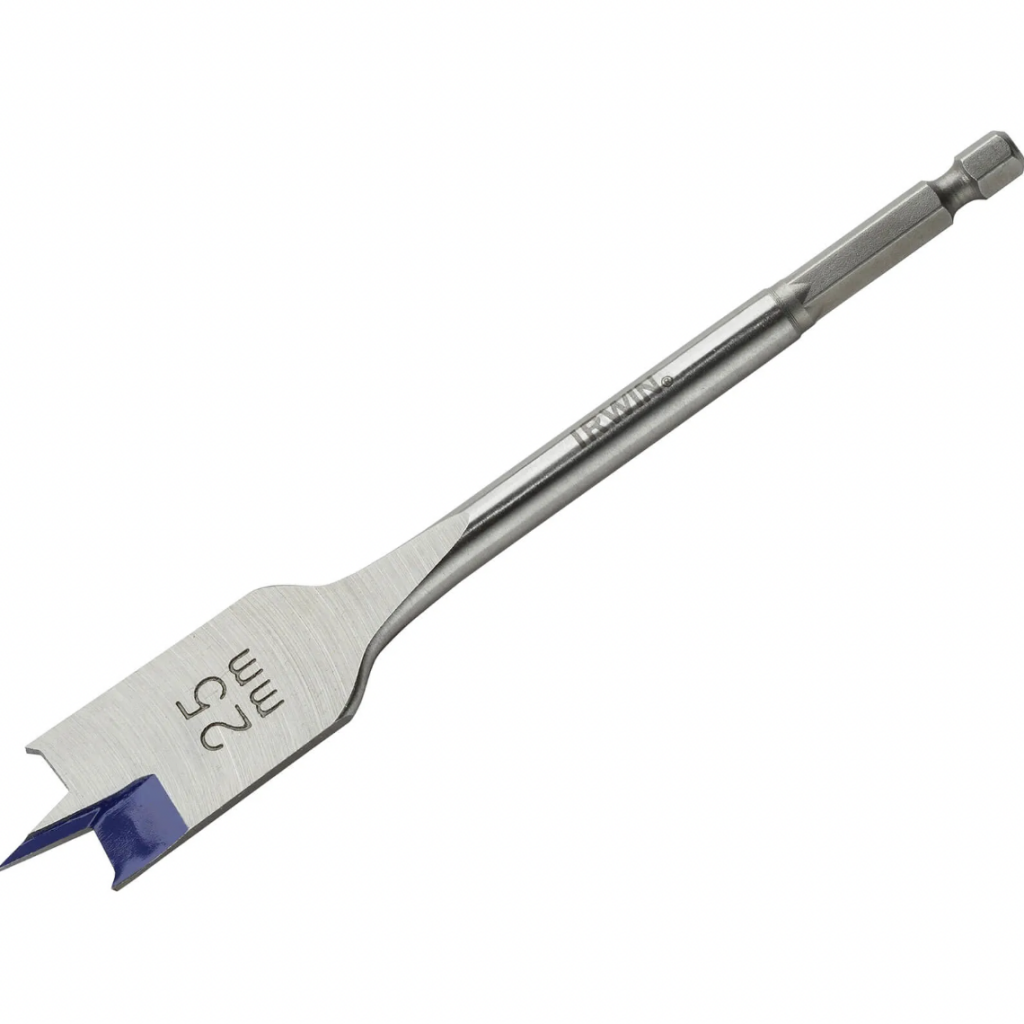
Flat drill bits, also known as spade bits, are a type of wood drill bit commonly used for drilling large, flat-bottomed holes in wood. These bits are ideal for tasks like creating holes for plumbing or electrical wiring, or for making holes for dowels or pegs.
The design of flat drill bits is relatively simple. They have a flat, paddle-shaped blade at the end that is used for boring through wood. The blade is often sharpened to ensure a clean cut, and the bit also has a central point that helps to guide the blade through the wood.
When using flat drill bits, it’s important to choose the right size for the job. Flat drill bits come in a range of sizes, typically from 6mm to 32mm in diameter. It’s important to consider the size of the hole you need to create, and to select a bit that is slightly larger than the hole to allow for any slight variations in the wood.
In addition to selecting the right size, there are a few tips and techniques that can help you achieve the best results when using flat drill bits.
- Mark your drilling location: Use a pencil to mark the location where you want to drill the hole. This will help you keep your bit aligned as you drill.
- Secure your workpiece: Clamp your workpiece securely to your work surface to prevent it from moving around as you drill.
- Use a pilot hole: For larger holes, it can be helpful to drill a pilot hole first to help guide the flat drill bit and prevent it from slipping or wandering.
With a little practice and patience, flat drill bits can be a versatile and effective tool for creating large, flat-bottomed holes in wood.
Forstner Drill Bits: Precision and Versatility for Woodworking
Forstner drill bits are specialized tools that offer unique design and features for precision drilling in woodworking. These bits are particularly suitable for creating holes in dense and hard woods, providing excellent control and accuracy. Forstner drill bits are often used in furniture-making, cabinetry, and other woodworking projects that demand high-quality results.
The Features of Forstner Drill Bits
Forstner drill bits have several characteristics that make them suitable for precision drilling in woodworking:
- Sharpness: Forstner bits have a sharp point that penetrates wood easily and accurately, reducing the risk of damage or splintering.
- Fluted design: Forstner bits have multiple flutes that help evacuate chips and debris from the hole, preventing clogging and heat build-up.
- Long length: Forstner bits are typically longer than regular bits, providing better control and stability during drilling.
- Compatibility: Forstner bits can be used with handheld drills, drill presses, and other woodworking machines, making them a versatile choice for various applications.
Forstner bits come in different sizes, ranging from 4mm to 30mm in diameter, and can create holes up to 8 inches (200mm) deep. The size and shape of the bit can be selected based on the specific project requirements, ensuring optimal results.
Using Forstner Bits for Woodworking
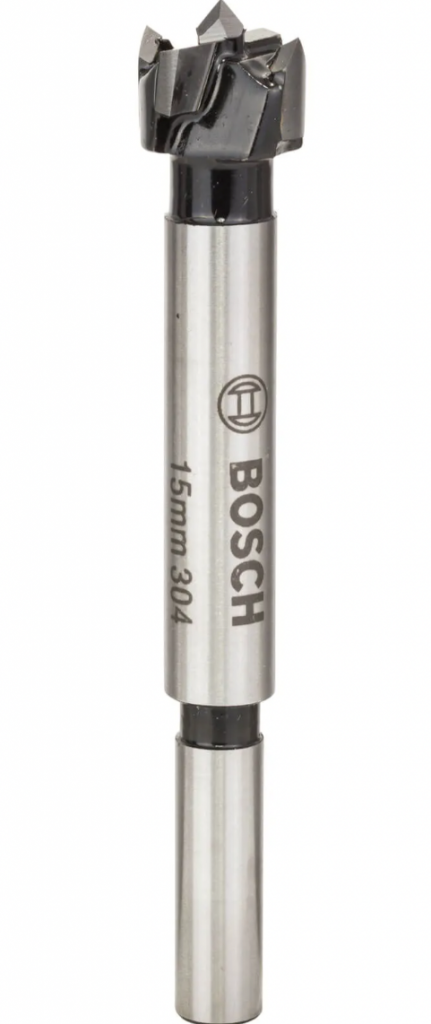
Forstner bits are particularly useful for drilling holes in hardwoods, such as oak, maple, and walnut, or for laminated or composite woods. They can also be used for drilling in softwoods, but their high speed and sharpness may cause tear-out or chipping.
When using Forstner bits, it is important to secure the wood firmly and use a steady drilling speed to avoid overheating or burning the wood. It is also recommended to drill pilot holes before using larger bits, especially in denser woods.
Cleaning and Maintenance of Forstner Bits
To ensure optimal performance and lifespan of Forstner bits, it is important to clean and maintain them regularly. After each use, the bit should be removed from the drill and cleaned with a soft brush or cloth to remove any debris or dust. If the bit becomes dull or damaged, it can be sharpened using a specialized sharpening tool or by a professional.
Countersinks: A Tool for Creating Flush Surfaces for Screw Heads
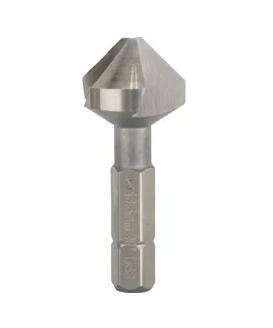
A countersink is a tool that creates a special type of hole, shaped like a cone, in various materials like wood or metal. This unique hole is designed to accommodate the heads of screws, bolts, or rivets. The magic of a countersink is that it allows these fasteners to sit flush with, or even below, the surface they’re driven into. Imagine a screw in a wooden table that’s perfectly level with the table surface, so smooth that you wouldn’t even know it’s there when you run your hand over it – that’s the work of a countersink.
This tool is incredibly useful in woodworking, metalworking, and various manufacturing processes where a smooth, snag-free surface is crucial. Not only does it enhance the appearance, making everything look neat and tidy, but it also serves a practical purpose. For example, when a screw head lies flush with the surface, there’s no risk of it catching on clothes or skin. Furthermore, by spreading the pressure exerted by the screw head over a larger area, countersinking can also help prevent the material from splitting or cracking, which is especially important in delicate or precision tasks.
Choosing the Right Wood Drill Bit
Choosing the right wood drill bit is crucial for achieving accurate and clean results in woodworking projects. It’s important to consider several factors to ensure you select the appropriate drill bit for your project needs.
Material
The type of material you’re drilling into will determine the kind of wood drill bit you need. For example, brad point drill bits are ideal for drilling into hardwoods, while auger drill bits work best for softwoods. It’s important to match the drill bit material to the wood you’re working with to achieve optimal results.
Size
The size of the wood drill bit you choose will depend on the size of the hole you need to create. Brad point drill bits come in a range of sizes from 1/16 inch to 1/2 inch, while flat drill bits can drill holes up to 1 1/2 inches in diameter. Consider the specific size requirements of your project to select the appropriate drill bit.
Desired Hole Characteristics
The desired characteristics of the hole you’re drilling will also play a role in determining the right wood drill bit. If you require a flat-bottomed hole, a flat drill bit will be your best option. If you need a clean, sharp hole with no splintering, a brad point drill bit is the way to go. And if you’re drilling deep holes, an auger drill bit will provide the necessary length and precision.
Rasp Drill Bits
For shaping and smoothing wood surfaces, rasp drill bits are a great choice. These versatile tools combine drilling and rasping functions, allowing you to achieve the desired shape and texture in your woodworking project. Consider using rasp drill bits in combination with other wood drill bits to achieve the best results.
By considering these factors and choosing the right wood drill bit for your project needs, you can ensure accurate, clean, and professional-looking results.
Choosing the Right Wood Drill Bit
Choosing the right wood drill bit for your woodworking project is critical to achieving the desired outcome. Here are some factors to consider when selecting the appropriate wood drill bit:
Material
The type of material you are drilling into will determine the type of wood drill bit you need. For example, if you are drilling into hardwood, a brad point drill bit or an auger drill bit may be the best option. On the other hand, if you are drilling into softwood, a flat drill bit or a rasp drill bit may work well.
Size
The size of the hole you need to drill will determine the size of the wood drill bit you should use. It is important to choose a drill bit that is the right size for the job to avoid splintering or damaging the wood.
Desired Hole Characteristics
The characteristics of the hole you need to drill will also influence your choice of wood drill bit. For example, if you need a clean, precise hole, a forstner drill bit may be the best option. If you need a hole with a flat bottom, a flat drill bit or a spade bit may be the way to go.
Compatibility with Your Drill
Make sure the wood drill bit you choose is compatible with your drill. Check the shank size of the drill bit and ensure it matches the chuck size of your drill. Additionally, check the maximum speed of the drill bit and ensure it is compatible with your drill’s maximum speed.
By considering these factors, you can choose the most appropriate wood drill bit for your specific woodworking project, ensuring the best possible results.
Care and Maintenance of Wood Drill Bits
Proper care and maintenance of wood drill bits is necessary to ensure their longevity and performance. Neglecting them can result in uneven or dull drilling, and can even damage the bits irreparably. Follow these tips to keep your wood drill bits in top condition:
Cleaning the Drill Bits
After each use, clean the wood drill bits thoroughly to remove any dust or debris that may have accumulated on them. Use a soft-bristled brush or a cloth to remove the debris. If there is any residue left on the drill bit, use a mild detergent and warm water to remove it. Be sure to dry the drill bits completely before storing them.
Sharpening the Drill Bits
Wood drill bits can become dull over time, which can negatively impact their performance. To sharpen them, use a drill bit sharpener or a sharpening stone. Make sure to follow the manufacturer’s instructions or seek advice from a professional before attempting to sharpen the drill bits yourself.
Storing the Drill Bits
When storing wood drill bits, ensure they are kept in a dry place, away from humidity and moisture. This prevents rusting and corrosion of the drill bits. Consider using a drill bit storage case or a designated storage area to keep them organized and prevent damage or loss.
Replacing the Drill Bits
Over time, wood drill bits may become damaged or worn beyond repair. This can result in uneven drilling, and can even pose a safety risk. It is important to replace the drill bits when they show signs of wear and tear, such as visible damage or frequent breaks. Keep a selection of replacement drill bits of various sizes and types on hand to avoid disruptions in your woodworking projects.
Conclusion: Choosing the Right Wood Drill Bit for Your Projects
As we have explored throughout this article, selecting the appropriate wood drill bit is crucial for achieving optimal results in woodworking projects. Whether you are drilling holes for hinges, creating plugs to conceal screws, or shaping and smoothing wood surfaces, there is a specific drill bit designed to meet your needs.
To recap, we have discussed the various types of wood drill bits available, including plug cutters, hinge drill bits, brad point drill bits, auger drill bits, flat drill bits, forstner drill bits, and rasp drill bits. Each of these drill bits has unique features and advantages, making them suitable for different woodworking tasks.
When choosing the right wood drill bit, it is important to consider factors such as the type of wood you are working with, the size of the hole you need to drill, and the desired characteristics of the hole. Taking the time to select the appropriate drill bit will ensure that your woodworking project is a success.
Finally, proper care and maintenance of your wood drill bits is essential for prolonging their lifespan and maintaining their performance. Be sure to clean, sharpen, and store your drill bits correctly to ensure they are always in top condition when you need them.
Thank you for reading this article on choosing the right wood drill bit for your woodworking projects. We hope that you have found it informative and useful in your woodworking endeavors.
FAQ
Are wood drill bits interchangeable?
Wood drill bits are not interchangeable as they are specifically designed for different purposes. It is important to use the correct wood drill bit for the job to achieve optimal results.
How do I choose the right size wood drill bit?
The size of the wood drill bit you need will depend on the specific project and the desired hole size. It is recommended to measure the diameter of the screw or hole you are working with and select a drill bit that matches or slightly exceeds that size.
Can wood drill bits be used on other materials?
Wood drill bits are primarily designed for drilling holes in wood. While they may work on softer materials such as plastic or soft metals, it is recommended to use the appropriate drill bit for each specific material to achieve the best results.
How can I maintain my wood drill bits?
To maintain your wood drill bits, it is important to clean them after use to remove any wood debris. You can also sharpen the cutting edges using a file or sharpening stone to ensure optimal performance. Additionally, store your drill bits in a dry and organized manner to prevent damage or loss.
Can I use wood drill bits with a drill press?
Yes, wood drill bits can be used with a drill press. However, it is important to adjust the drill press settings to the appropriate speed and depth for the specific wood drill bit being used. Always refer to the manufacturer’s instructions for proper usage.
Are wood drill bits suitable for hardwood?
Wood drill bits can be used on hardwood, but it is important to use a sharp and appropriate size bit to prevent splintering or damage to the wood. Pre-drilling small pilot holes may also be necessary for hardwood to ensure clean and accurate drilling.
Can I use wood drill bits with a cordless drill?
Wood drill bits are compatible with cordless drills. However, it is important to ensure that the drill has enough power and torque to handle the drilling task. Using a drill with adjustable speed settings can also help achieve better control and accuracy.
How can I prevent wood drill bits from overheating?
To prevent wood drill bits from overheating, it is important to use a cutting lubricant such as beeswax or cutting oil. This helps to reduce friction and heat generation during drilling. It is also recommended to periodically withdraw the drill bit while drilling to allow heat to dissipate.
Can wood drill bits be sharpened?
Wood drill bits can be sharpened to maintain their cutting edges. This can be done using a file or sharpening stone, following the original angle of the cutting edge. However, if a drill bit becomes significantly worn or damaged, it may be more effective to replace it.
Are wood drill bits safe to use?
Wood drill bits are safe to use when proper safety precautions are followed. It is important to wear appropriate eye protection and work in a well-ventilated area. Take care to secure the workpiece and hold the drill firmly to prevent accidents or injury.
Leave a Reply